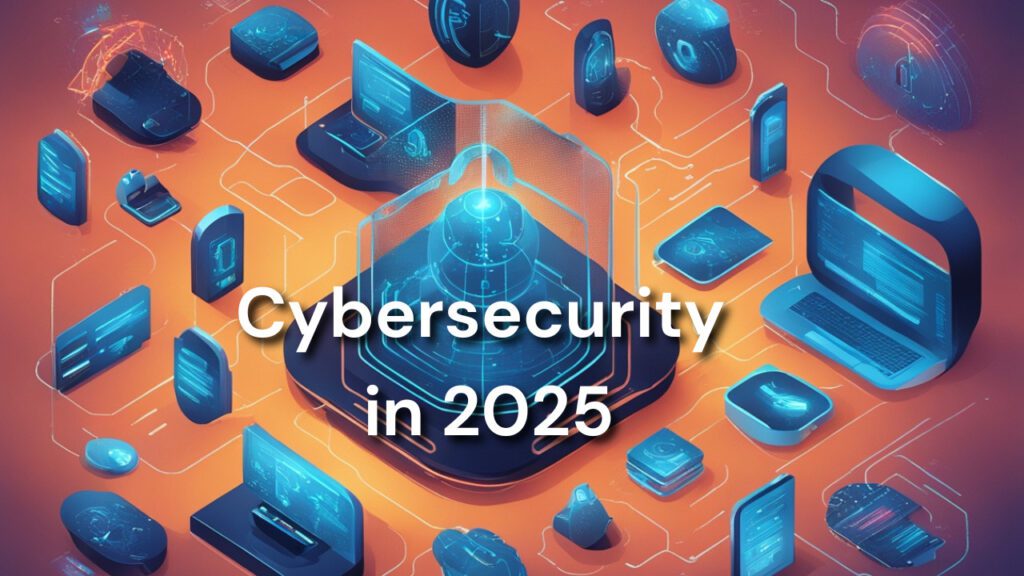
Introduction
By 2025, cybercrime damages are projected to exceed $10.5 trillion annually. As AI-driven threats and quantum computing reshape the digital battlefield, safeguarding your data requires more than just antivirus software. In this guide, we’ll explore the top cybersecurity trends of 2025, emerging risks like biometric hacking and supply chain attacks, and actionable strategies to future-proof your digital life.
1. Proactive Cybersecurity Strategies for 2025: Moving Beyond Reactive Measures
Gone are the days of relying solely on post-breach responses. In 2025, proactive cybersecurity is non-negotiable. Here’s why:
- AI-Driven Threats: Hackers leverage AI to automate phishing scams and bypass traditional defenses.
- Hyper-Connected IoT Risks: Smart devices (e.g., refrigerators, cars) create exploitable entry points.
- Data Monetization: Personal data is a goldmine for manipulation, extortion, and identity theft.
Key Takeaway: Adopt tools like AI-powered threat detection and Zero Trust frameworks to stay ahead.
2. Top Cybersecurity Threats to Watch in 2025
Quantum Computing & Cryptography
Quantum computers could crack today’s encryption by 2025. Invest in post-quantum cryptography to protect sensitive data.
Deepfake Cyberattacks
Deepfake technology will fuel financial fraud and misinformation campaigns. Use AI-driven detection tools to spot synthetic media.
AI-Powered Phishing
Personalized phishing emails, crafted via AI analysis of social media, will evade traditional spam filters. Train teams to recognize subtle red flags.
Biometric Hacking
Facial recognition and fingerprint scans are vulnerable to spoofing. Implement multi-factor authentication (MFA) for critical accounts.
Supply Chain Vulnerabilities
Third-party vendor breaches will escalate. Audit partners’ security protocols and adopt blockchain for tamper-proof transaction records.
3. Building a 2025 Cybersecurity Framework: 5 Actionable Steps
Step 1: Adopt a Zero Trust Model
Assume no user or device is trustworthy. Require continuous verification for network access.
Step 2: Leverage Decentralized Security
Explore blockchain for secure identity management and data integrity.
Step 3: Prioritize Cyber Hygiene
- Update passwords regularly.
- Use a VPN for public Wi-Fi.
- Limit social media oversharing.
Step 4: Deploy AI for Threat Detection
AI algorithms can predict attack patterns and automate responses.
Step 5: Conduct Ethical Hacking
Hire “red teams” to simulate breaches and uncover vulnerabilities.
4. FAQs: Cybersecurity in 2025
Q: What is the Zero Trust model?
A: A security framework requiring strict identity checks for every user and device, regardless of location.
Q: How does quantum computing affect cybersecurity?
A: Quantum computers can break traditional encryption, necessitating quantum-resistant algorithms.
Q: Are biometrics safe in 2025?
A: Biometrics alone aren’t enough. Pair them with MFA for robust protection.
Conclusion: Stay Ahead of the Cyber Arms Race
Cybersecurity in 2025 demands constant evolution. By integrating AI tools, fostering a culture of cyber awareness, and adopting proactive measures like Zero Trust, you can defend against even the most sophisticated threats.
Call to Action: Share this guide with your network, and let us know in the comments: What’s your biggest cybersecurity concern for 2025?
